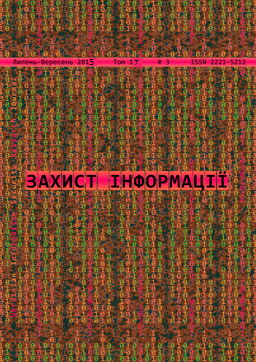ALGORITHMIC ASPECTS OF PREIMAGE SEARCH FOR HASH FUNCTIONS ON THE EXAMPLE OF MD5
DOI:
https://doi.org/10.18372/2410-7840.17.9516Keywords:
information security, hash function, preimage, collision, differential path, «meet-in-the-middle», MD5, Merkle-Damgard scheme.Abstract
In this paper some issues of Aoki method for Merkle-Damgard hash functions preimage was considered. Insteadof the original method, which requires several differentialpaths for theoretical attack, we are targeted on generationof large set of high-probability differential paths. Methodsof set of high-probability differential paths generating wassuggested, complexity evaluation for reduced MD5preimage searching was obtained. These resultsdemonstrate weakness of reduced MD5 algorithm, alsothey provide additional constrictions for new hash functionconstructions.References
Ralph Charles Merkle. Secrecy, authentication, and public key systems. PhD thesis, Stanford, CA, USA, 1979. AAI8001972.
R. Rivest. The MD5 Message-Digest Algorithm, 1992.
Simon Knellwolf and Dmitry Khovratovich. New preimage attacks against reduced sha-1. Cryptology ePrint Archive, Report 2012/440, 2012.
Downloads
Published
2015-11-03
Issue
Section
Articles
License
Authors who publish with this journal agree to the following terms:- Authors retain copyright and grant the journal right of first publication with the work simultaneously licensed under a Creative Commons Attribution License that allows others to share the work with an acknowledgement of the work's authorship and initial publication in this journal.
- Authors are able to enter into separate, additional contractual arrangements for the non-exclusive distribution of the journal's published version of the work (e.g., post it to an institutional repository or publish it in a book), with an acknowledgement of its initial publication in this journal.
- Authors are permitted and encouraged to post their work online (e.g., in institutional repositories or on their website) prior to and during the submission process, as it can lead to productive exchanges, as well as earlier and greater citation of published work (See The Effect of Open Access).

